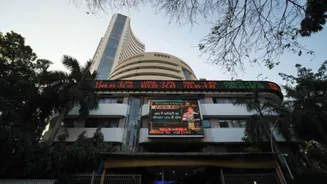FIIs' Changing Stance
In 2025, Foreign Institutional Investors (FIIs) have adopted a more discerning approach to the Indian IPO market. This change in strategy comes after substantial
selling in the secondary markets, where they offloaded equities worth nearly Rs 2 lakh crore. This trend followed the sale of over Rs 1.21 lakh crore in 2024. This shift suggests a change in the dynamics of foreign investment in Indian equities, as FIIs reassess their strategies amidst evolving market conditions and global investment alternatives. This cautious approach could reflect concerns regarding valuation levels and the potential for gains post-listing. Overall, this period witnessed a notable shift in investment behavior within the Indian stock market, as FIIs reevaluated their investment decisions based on market performance and prevailing economic factors.
IPO Performance Analysis
The performance of IPOs in the current year further underscores FIIs' cautious approach. Out of the 85 mainboard IPOs that were launched this year, 29 commenced trading below their issue price. Additionally, 27 IPOs recorded modest gains, with returns ranging between 1 and 10 percent. A smaller group of 12 stocks experienced gains between 11 and 20 percent. Some 13 IPOs saw gains between 25 and 50 percent. Only three IPOs delivered gains exceeding 50 percent upon listing. These figures likely influenced FIIs' perception of risk and return in the primary market, making them more selective about where they put their money. This scrutiny highlighted the increased importance of thorough due diligence and an understanding of market dynamics before participating in IPOs.
Inflows Decline Significantly
The evolving investment landscape witnessed a considerable decline in FII inflows into IPOs. Figures indicate a 55 percent drop in 2025. This decrease in investment can be attributed to multiple factors. Firstly, persistent selling in the secondary markets likely impacted investor sentiment. Secondly, the emergence of more global investment options provided alternative avenues for capital deployment. Together, these elements shaped the financial environment, leading to a shift in how FIIs allocated their resources. This trend indicated the growing importance of assessing market performance and considering global opportunities when making investment decisions. The reduced interest from foreign investors highlights the growing need for companies to present attractive valuations and prospects to attract investment.
Mutual Funds' Growing Role
While FIIs turned cautious, domestic mutual funds (MFs) have increased their participation in the primary market. Data from a Moneycontrol report dated October 20 indicated that MFs invested approximately Rs 22,750 crore in IPOs during 2025. This investment constituted almost 19 percent of the total Rs 1.22 lakh crore raised through the primary market. Within this figure, fund houses allocated Rs 15,158 crore through anchor investments. Additionally, they invested Rs 7,590 crore in the Qualified Institutional Buyer (QIB, non-anchor) segment between January and mid-October. This suggests a greater role for domestic investors in supporting the Indian primary market, showcasing their confidence in the long-term prospects of Indian companies.
Global Market Attractions
According to Kranthi Bathini, Director - Equity strategy at WealthMills Securities, foreign investors are increasingly shifting their focus toward global equity markets. This includes the US, China, and key economies in Europe and emerging markets. Furthermore, the strong performance of artificial intelligence-linked stocks, alongside commodities such as gold, silver, and platinum, has also drawn allocations from FIIs. This combination of global opportunities, and possibly elevated domestic valuations, has resulted in reduced foreign inflows into both the primary and secondary Indian markets. This indicates a strategic shift as investors pursue potentially higher returns and diversify their portfolios. This global trend poses a challenge for the Indian market, requiring continued efforts to maintain investor interest and a competitive investment environment.















